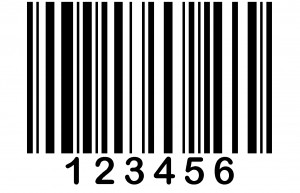
 Yesterday we attended a full day of geolocation discussions taking place as part of the Los Angeles Social Media Week. Today we’re going to delve run a series of posts delving into some of the themes from yesterday, starting with QR codes / barcodes.
Yesterday we attended a full day of geolocation discussions taking place as part of the Los Angeles Social Media Week. Today we’re going to delve run a series of posts delving into some of the themes from yesterday, starting with QR codes / barcodes.
One of the emerging focuses of geolocation startups has been to transform QR codes and barcodes into a way to not only confirm that a person has physically been present at place, but also as a way to either add a web note to the barcode (whether as a check-in, picture, status update or even a video) and/or to “unlock” secret messages or prizes. Mainly because of these two reasons, this idea should have a lot of appeal to marketers, especially marketers that sell retail merchandise. Certainly, that is what startups that we’ve previously covered – Stickybits and MyTown – as well as probably many others, are hoping.
Stickybits is really hoping for this, as basically, the startup’s entire play is about QR and barcodes. Yesterday, Stickybits founder Seth Goldstein gave a preview of some of the features that we can expect in the next version of its mobile app, and we will certainly take an in-depth look at it when it’s released in the next few weeks. It would seem from Goldstein’s presentation that the startup is at least slightly shifting its focus away from QR stickers and turning towards focusing more on barcodes, and frankly, this is probably the correct play.
While it’s true that QR stickers (and barcode stickers for that matter) can be used to create cool trips and can be placed anywhere (and are especially useful at conferences, which this year’s SXSW showed), the simply fact is that barcodes are everywhere, so the potential market is just so much larger than trying to build out a network of stickers, or posters or whatever.
Another geo-startup – location-game MyTown – has certainly gone full swing into the barcode scanning realm with its product check-ins (which we covered here when it launched). Last night, we heard about one impressive case study from Susan Kuo, VP of Sales for MyTown creator Booyah.
With 3.1 million users as of a month ago, MyTown has much more scale than Stickybits so it’s very enlightening to see how a promotion done at this user scale – and with a major brand, in this case Pantene – is doing. The still ongoing promotion has already resulted in 252,000+ barcode scans of Pantene shampoo. Assuming that one user = one bottle of shampoo, that would mean that about 8% of MyTown’s 3.1 million users took part in this promotion. For a user base that is heavily male (according to Kuo) that is even more impressive.
Barcode promotions, however, are not all pure gold.
One problem, as Goldstein pointed out yesterday, is that barcodes are often on the back or the bottom of the packaging, meaning that users need to move the package around to scan the code (if in fact the packaging is even accessible – for instance, the boxes you buy laptops in are usually locked away). Also, as Kuo pointed out, currently, there is no way for these startups to know if the users purchase the items that they scan – that is up to the store to share that info (of course, if the app could also be used to make the purchase…).
Another problem is certainly just getting people to remember to scan the barcodes, but of course, that is a problem with any consumer activity. Stickybits, MyTown and other startups in this space could certainly benefit from a change in packaging that puts the codes front and center. However, in the short term, it would seem more likely that these startups and the brands could convince retailers to put barcode stickers (related opportunity for Stickybits perhaps?) or other signage that emphasizes/reminds users to scan items to unlock discounts, etc. Basically, a triumvirate of startups, retailers and the brands needs to be formed to make this ecosystem much more convenient and out front for users.
If that happens, expect many more – if not all at some point – retail digital marketing campaigns to incorporate some form of barcode scanning – it just makes too much sense to not do it.
Get the TNW newsletter
Get the most important tech news in your inbox each week.




